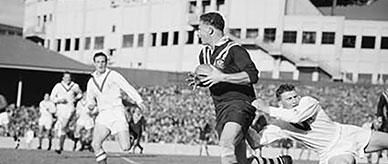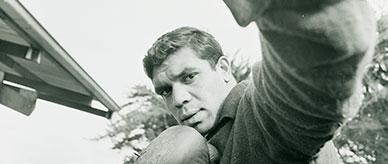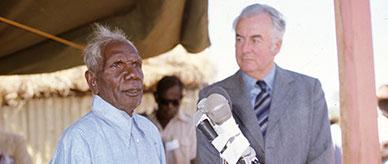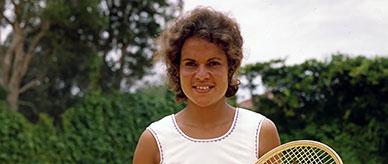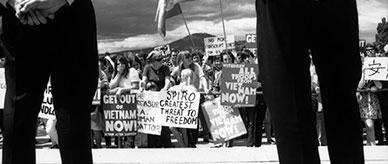


About this record
This is a colour photograph of Evonne Goolagong Cawley at the age of 21. She stands on a clay tennis court dressed in a white one-piece tennis outfit of sleeveless top and short skirt. She is shown behind a tennis net holding a wooden tennis racquet, looking slightly to one side of the camera. Trees and a hedge can be seen enclosing the tennis court in the background.
Educational value
-
Evonne Fay Goolagong Cawley (1951–) was one of the greatest sportswomen in Australian sporting history and is considered the top woman tennis player in the world on the Women's Tennis Association Tour in 1971 and 1976. She won seven Grand Slam singles tennis titles – the French Open (1971), Wimbledon (1971, 1980) and the Australian Open (1974, 1975, 1976, 1977) – defeating Martina Navratilova, Chris Evert and Margaret Court, among others.
-
Evonne Goolagong Cawley was one of the first Indigenous women to achieve national prominence and international success in Australian sport. Belonging through her father's side to the Wiradjuri people, she achieved distinction at a time when it was still exceptionally difficult for Indigenous Australians of either gender to enter sport at a national or international level. After her tennis career, she became active in promoting sport within Indigenous communities.
-
Born in Griffith in southern New South Wales and growing up in nearby Barellan, Goolagong Cawley displayed remarkable aptitude at tennis from a young age. Her skill was noticed by a visiting coach during a local tennis clinic in the early 1960s and she moved to Sydney to receive professional coaching. By 1970 she was Australian junior tennis champion. She was named Australian of the Year in 1971 and made an Officer of the Order of Australia (AO) in 1982.
-
Goolagong Cawley became the first mother to win Wimbledon since 1914 when she defeated Chris Evert in 1980, nine years after her first Wimbledon title. She retired to Florida, United States, in 1983 with her husband, English tennis player Roger Cawley. In 1988 she was inducted into the International Tennis Hall of Fame and returned to live in Australia.
-
Wooden tennis rackets such as the one in this photograph were still commonly used throughout the 1970s, although the introduction of a lightweight metal racquet in 1967 had begun to challenge the dominance of wood. Former tennis great Jimmy Connors used a metal racquet in the 1970s, and stronger and lighter graphite racquets, introduced in the early 1980s, completely replaced wood on professional tennis circuits.
Acknowledgments
Learning resource text © Education Services Australia Limited and the National Archives of Australia 2010.
Related themes
Need help with your research?
Learn how to interpret primary sources, use our collection and more.

